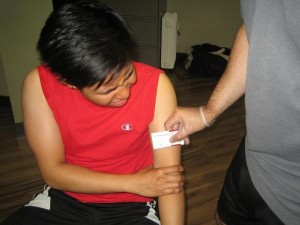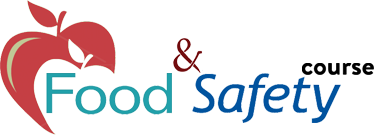Clostridium perfringens is one of the most common causes of foodborne illnesses. It is commonly found in raw meat and poultry but can be found in many other different food sources. It is usually acquired by eating contaminated foods and cannot be passed from one person to another. Although anyone is at risk for Clostridium perfringens infection, the young and the elderly are at greater risks of more severe cases and possibly developing complications, such as dehydration.
Clostridium perfringens is a gram-positive bacterium that forms spores. It is not uncommon to find Clostridium perfringensin human and animal intestines without causing harm and found in many environment sources. However, it has certain strains that can produce a toxin in the intestine that will cause an illness.This type of bacterium prefers to grow in an environment where there is very minute or completely no oxygen. When presented in the right growing conditions, it can multiply and grow quickly.
Common Food Sources of Clostridium perfringens
When large amounts of Clostridium perfringensare ingested, food poisoning occurs. Clostridium perfringens can withstand high temperatures. Thus, when food is served without reheating to kill bacteria, live bacteria may be ingested. Many foods can cause Clostridium perfringens food poisoning but the following foods are the most common sources, which include:
- Beef
- Poultry
- Meat products
- Gravies
- Dried or pre-cooked foods
Signs and Symptoms of Clostridium perfringens
Clostridium perfringens has an incubation period of six to 24 hours. The incubation period is the time elapsed between initial exposure to the bacterium and the time it takes for the first symptoms to appear. In most cases, signs and symptoms only last for 24 hours or less. More severe cases would take one to two weeks. The following are the signs and symptoms of Clostridium perfringens food poisoning:
- Diarrhoea
- Abdominal cramps
- Usually not characterized by vomiting and fever
First Aid Management for Clostridium perfringens

Most cases of Clostridium perfringens food poisoning are not serious and are not life threatening. The main goal of first aid management for Clostridium perfringens is to manage the symptoms and avoid dehydration from happening. The following tipsare advised in cases of Clostridium perfringensfood poisoning:
- Drink eight to ten glasses of clear fluids, preferably water.Every time there is a loose bowel movement, drink at least one cup of liquid.
- Instead of eating three big meals, eat small meals instead.
- Put some salty food in the diet, such as pretzels, soup, and sports drinks.
- Addfoods high in potassium, such as bananas, potatoes without the skin and fruit juices with plenty of water.
- It is not ideal to take anti-diarrheal or antibacterial medications as it may cause the infection to last longer unless it is recommended by a doctor.
Disclaimer: This article does not provide medical advice and should not be substituted for formal training. The information given should not be used for self-diagnosis. Seek medical attention when necessary. It is important to recognise potential medical emergencies at all times to avoid complications from developing. To learn more about how to manage Clostridium perfringens food poisoning, enrol in First Aid Courses and CPR Courses with Red Cross Training.
Online Sources:
http://www.cdc.gov/foodsafety/clostridium-perfingens.html
http://www.foodsafety.gov/poisoning/causes/bacteriaviruses/cperfringens/
